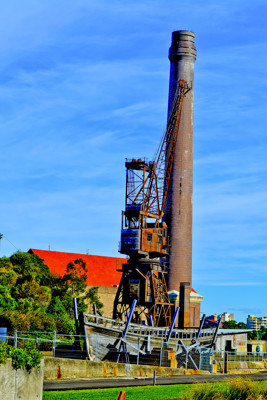Caedes
Upload Images
Welcome guest
Log In or Register
User Stats
- 0 total users online
- 41 users active today
- 259236 total members
- +show users online
Cockatoo Island


Dlds: 157
Status: active
Cockatoo Island has a long and illustrious history dating back to the time of first settlement, playing a significant role in the development of Sydney and the nation. Pre 1788: Frequented by sulphur-crested cockatoos, the island's first visitors were most likely the Eora people, the Aboriginal people of Sydney's coastal region. They called the island Waremah. It would have been a great base to fish from for them, in their bark canoes made from the red gum forests that once covered the island hill. 1839-1850: In 1839 the Governor of the colony of New South Wales, Sir George Gipps, chose Cockatoo Island as the site of a new penal establishment to alleviate overcrowding on Norfolk Island. Convicts were put to work building prison barracks, a military guardhouse and official residences. 1850-1870: The Fitzroy Dock and a workshop are built by prisoners to service Royal Navy and other ships. 1870-1880: Prisoners relocate to Darlinghurst Gaol and the island is used for an Industrial School for Girls and a reformatory. The ship, Vernon, is anchored nearby to train wayward and orphaned boys. 1880-1900: Shipbuilding and repair activities expand steadily and Sutherland Dock is completed. The island reverts back to a gaol from 1888-1908 due to overcrowding elsewhere. 1900-1930: Cockatoo Island becomes the Commonwealth Naval Dockyard in 1913 and Australia builds its first steel warship on the island. 1930-1945: The island becomes the major shipbuilding and dockyard facility for the South West Pacific in WWII following the fall of Singapore. 1945-1965: Additional buildings are constructed for shipbuilding and repair. The refit of T-Class submarines occurs and the Navy destroyers, HMAS Voyager and HMAS Vampire, are built. 1965-1992: The island's work includes service and refit of Oberon Class submarines and construction of HMAS Success. The dockyard closes in 1992, machinery is sold off, and about 40 buildings and several wharves are demolished. 2001-present: Cockatoo Island lays dormant for a decade until the Sydney Harbour Federation Trust assumes control of the island and embarks on major restoration works. After extensive remediation works, Cockatoo Island was opened to the public in 2007. The Harbour Trust continues to actively rehabilitate the island. 2010: Cockatoo Island, together with 10 other historic convict sites in Australia, is inscribed on the UNESCO World Heritage List.
I couldn't find however which wooden ship was under restoration.
If I've more time, I'll continue to search for it.
Thanks for now, Frank.